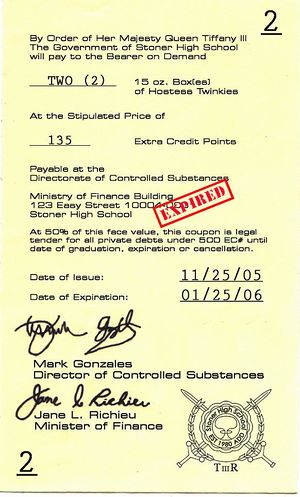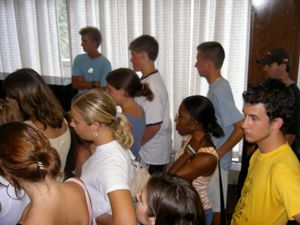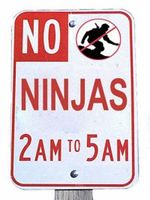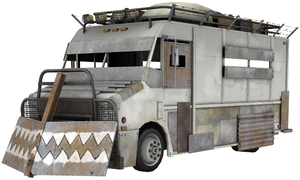Stoner High School/Controversies
| This article is part of the Stoner High School series. |
|---|
Controversies
Twinkie rationing
The most controversial issue on the SHS campus is the government's rationing of Twinkies. This measure, enacted by Phoebe III in 1994, was intended to reduce the acute shortage of Twinkies at SHS and ensure that every person had access to at least four boxes of Twinkies a week. While this program did reduce sugar withdrawals, it also mean that those students who had come to depend on eating a box of Twinkies every day were left with insufficient nourishment and were forced to seek other foods to consume.
Many argued that the hiring of Hostess as a caterer (and the bulk discounts that followed) meant that the supply of Twinkies should increase and rationing should no longer be necessary. However, after the dot-com bubble burst, the Stoner treasury was at considerable financial hardship and it was not possible to purchase any more than four boxes of Twinkies per person per week even with the new bulk discounts. With the US's improved economy in the past few years, the most recent regency of Tiffany III has made it a policy goal to eliminate Twinkies rationing by 2007, and Queen-Elect Sophie I has pledged to continue this course.
Some have suggested that, in keeping with the generally free market at Stoner, that the government Twinkie monopoly be broken up. Opponents of this plan argue that unlike beer and kitten huffing, Twinkies are dangerous when consumed in excess numbers and that the control of their distribution is necessary for public safety, citing several reports of extreme hyperactivity and property damage caused by people who had consumed upwards of sixteen boxes of Twinkies and one fellow in particular who had had twenty. Supporters of Twinkie privatization point out that the guy who ate twenty boxes of Twinkies got the last sixteen of them on the black market (mostly consisting of brown-bag lunches made by the parents of anorexic students) and that Twinkie regulation, much like alcohol regulation during Prohibition, was essentially unenforceable.
“What do you call a Twinkie privatization supporter who just got jumped by a Stoner on a sugar high? A Twinkie privatization opponent. But a bottle of jack... never any harm in that.”
“Look now, you've got crack and kittens being sold freely on campus in addition to hard liquor by the case, and you're saying Twinkies are too dangerous for the open market? What happened to equal protection?!”
The issue promises to be a high-profile question during elections for years to come.
Ninja Statute of 2005
The rising number of mischievous incidents involving ninjas on the Stoner campus caused considerable annoyance among Stoner students. Students would return from class to find shuriken buried in their car doors, or have their kittens impaled by poisoned darts and rendered unpalatable while preparing them for huffing. Increasing complaints about the activities of the SHS Ninja Club, especially their night meetings, led to the Board of Governors passing the Ninja Statute of 2005.
The statute strictly forbids ninjas from conducting any activities between the hours of 2 AM and 5 AM, and imposes strict penalties on interference with another student's transportation, alcoholic libations, or kitten huffing, among a large number of protected activities. The law was signed by HM Greg III and has been in force ever since.
The law was contested at a special session of the Regents Commission, with Ninja Club counsel arguing that the statue constituted a violation of the ninjas' civil rights. However, the Commission ruled unanimously that "the right of the student public to enjoy their narcotic substance of choice and to drive about in motor vehicles unburdened by fear of flying nunchuks" trumped the ninjas' rights to freedom of expression and destruction.
Racist-Chauvinist Rallies
In 1994, in an effort to raise their electoral profile and have some good clean fun, two minor parties at Stoner, the Racist Front and the Chauvinist Union, established a monthly stock car race.
The rally is run at the Guinness Downs dirt track in unincorporated Fockersville County. The Racists and Chauvinists subdivide into several teams, which compete against each other in a series of races.
The Racist teams represent each faction of the Racist party:
- The White Knights, representing white supremacists. Their vehicle of choice is the "Bull Connor" configuration, a decommissioned Crown Victoria Police Interceptor equipped with a souped-up engine, shocks, a water cannon and ramming bumpers.
- The Black Panthers, representing black supremacists. The Panthers usually drive various types of pimpmobile but tend to favor mods of large SUVs. Their style has been criticized on focusing on the "bling" factor for supposed intimidation while neglecting performance tradeoffs. Spinning rims and minimum 50% gilded surfaces are required equipment for all of their vehicles.
- The MEChAnics, representing Hispanic supremacists. They usually drive large illegal immigrant smuggling vans, which are optimized for driving through heavy dust.
- The Dragons, representing drag racers. Their vehicles are usually small hatchbacks or subcompact cars fitted with loud, noisy engine attachments for maximum speed and annoyance.
- The Crimson Necks, representing NASCAR fans. Most Necks drive NASCAR type vehicles focusing on manuverability.
The Chauvinist teams, on the other hand, are divided by racing style:
- The Juggernauts favor large, heavy pickups and SUVs. These vehicles are often weighted down to prevent rollovers and tend to rely on their mass to control the race.
- The Enforcers drive various types of armored vehicles including bank trucks, obsolete armored personnel carriers, and retired SWAT vans. These vehicles are generally faster than those of the Juggernauts but have less pushing power, creating a decent compromise between speed and durability and being more resistant to firearms and other projectile damage than any other car on the track.
- The Banzai Brigade drives tuner cars focusing on speed. Unlike the Dragons, the Banzai Brigade tends to use sport cars (such as the Sunfire or the Camaro) instead of modding clunkers. This increases repair costs but results in better up-front performance.
Anti-spandex laws
In early 2009, massive protests against outfits containing spandex rocked the school. Many students were deeply outraged by a small group of individuals who had taken to wearing spandex capris and leggings under their skirts. In response, the Board of Governors passed the Fabric Act outlawing the wear of spandex clothing under various circumstances as a "crime against humanity". Parties supported this act, and it was approved by the Privy Council and signed by Queen Ashley I the day after its passage. The Queen described the measure thusly:
“Stoner prides itself on the extent of its social liberties. But there are some things we simply cannot abide in... things which shock the conscience and go beyond the pale even of our highly built-up tolerances. These are catastrophes which we cannot idly watch come to pass before our eyes, bleary as they may be. One such catastrophe is the wear of spandex leggings under skirts and dresses. It is disgusting and it must be stopped. Thousands of students have written me directly to complain about this matter. I join the Board of Governors and my Privy Council in saying, 'Not on my watch.'”
Opinion polls show that 99% of students agree with this measure, the remaining 1% being the guilty culprits who were fined 3000 extra credit points apiece for violating the Act while staging a protest of their own.
The Act was the brainchild of Lord O'Neill, who as Chief Inspector of the Fashion Police was highly concerned by the number of depositions filed by distraught students who had witnessed these high crimes of fashion. He was later elected King in the next monarchical election, with his leadership in the fight against spandex being a major factor.
|
1. Home |
8. Geography |






